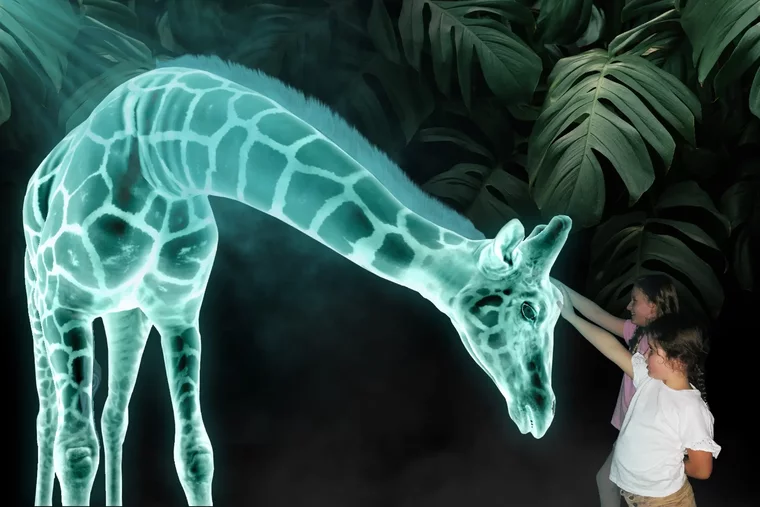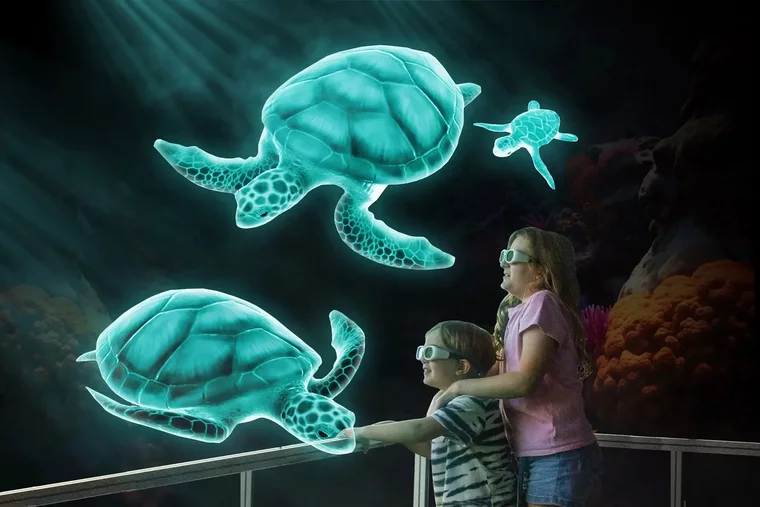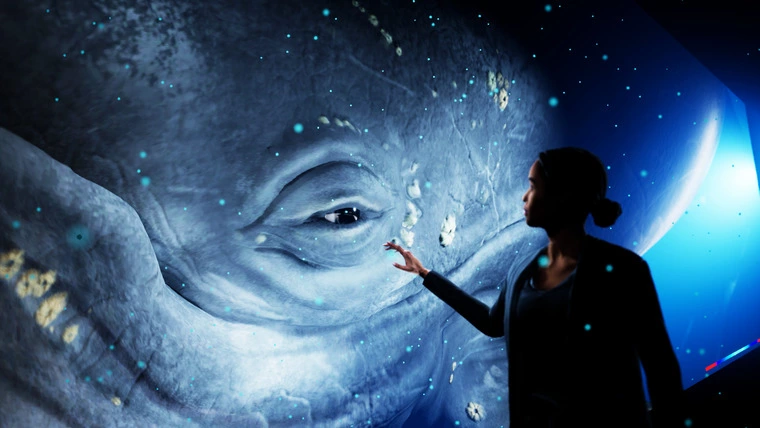In a futuristic innovation blending technology and wildlife, an Australian-based technology company, Axiom Holographics, has unveiled the world’s first “Hologram Zoo” in Brisbane, Australia.
Leveraging advanced multi-viewpoint 3D display tables, Axiom says this remarkable techno-zoo provides visitors with an immersive, dynamic, and multi-dimensional safari experience.
Wearing position-tracked glasses, visitors to the Hologram Zoo are surrounded by life-like animals from various world regions. A graphics engine in the glasses creates a unique image for each eye, resulting in 3D images that seemingly float mid-air and maintain their position even when visitors move or walk around.
“All the animals look real and solid, but they are actually made out of laser light,” an excerpt from the Hologram Zoo’s website reads. “They are 3D, so you can walk around them and touch them (but your hand goes straight through them as they are made of light).”


From the rudimentary light-splitting and interference patterns first demonstrated by Dennis Gabor in the late 1940s, holography has seen immense advancements over the past few decades.
Modern holography, like that found at the Hologram Zoo, leverages advanced light field rendering techniques, depth perception algorithms, and eye-tracking capabilities to create complex volumetric and dynamic displays.
The applications of modern holographic technology are as varied as they are ingenious. Posthumous holographic concerts have become a growing trend in the entertainment industry, with deceased icons like Tupac Shakur and Michael Jackson given new “life” on stage.
Earlier this year, retail clothing chain H&M announced it was installing Proto Epic hologram displays at some of its storefronts, offering life-size, 4K UHD holograms of fitness instructors wearing Move athletic clothing.
In healthcare, holography is revolutionizing medical imaging and surgical procedures. Physicians can now visualize and interact with 3D holographic images of a patient’s anatomy, improving diagnosis accuracy and surgical precision.
According to a recently released report, the 3D holographic display and services market is projected to experience “massive” growth over the next seven years.
This rapid expansion sets the stage for groundbreaking applications of holographic technology, suggesting Axiom’s Hologram Zoo could be the first in many immersive holographic experiences we could see in the future.


Axiom’s Hologram Zoo includes 16,000 square feet of interactive space, featuring two 65-foot-long “tunnels” with screens on three walls and several smaller 16-foot rooms with four-wall coverage, thus providing near-total visual immersion.
The “zoo” offers 25 distinct tunnel experiences, ranging from African safaris to prehistoric landscapes teeming with dinosaurs and underwater environments.
According to Hologram Zoo’s website, smaller rooms offer unique non-animal related experiences, such as hologram escape rooms or holographic sports and arcade games.
On its website, Axiom explains that its holographic technology does not involve virtual reality, which the company describes as involving “big helmets with screens that shine into your eyes. Nor does a visit to the Hologram Zoo involve augmented reality or projection mapping.
“Holograms are far more impressive than those older forms of technology,” the company writes. “Holograms use Lasers to project large objects in the air that lots of people can see together. They can be animated, glowing, or even interact with the audience.”
Intriguingly, the Axiom also explicitly clarifies that guests will not be treated to a Roman Colosseum-like bloodsport experience during their visit to the Hologram Zoo.
“The Hologram Zoo does not have any animals attacking or eating each other, there is no blood or animals in distress,” a Q&A section on the zoo’s website reads. “Many of the scenes have been purposefully designed to be peaceful and awe-inspiring. However, some children may be scared in some scenes, such as roaring dinosaurs.”
“Hologram entertainment centers are a fantastic way to be teleported to places that you could not normally visit,” Bruce Dell, Axiom CEO, said in a press release. “For example, I do not think people really know just how big a whale is, but when they see a giant life-sized whale swim past them at hologram zoo, they all seem to pause in reverent silence because it is something that they would normally never get the opportunity to see in real life.”
According to Dell, the Brisbane Hologram Zoo is a test site for perfecting the technology before global expansion. After a six-month run, Axiom’s CEO says the company plans to open similar centers in Japan, Texas, and Europe.
Tim McMillan is a retired law enforcement executive, investigative reporter and co-founder of The Debrief. His writing typically focuses on defense, national security, the Intelligence Community and topics related to psychology. You can follow Tim on Twitter: @LtTimMcMillan. Tim can be reached by email: tim@thedebrief.org or through encrypted email: LtTimMcMillan@protonmail.com

